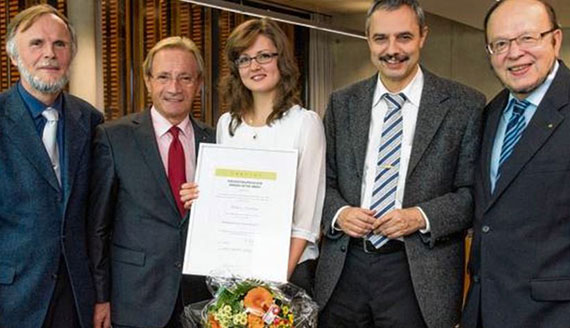May 26, 2018
Test spatial vision on the television
The important men in suits take a pair of 3D glasses and look at the television. Helene Djadjun hacks something into the computer that she has connected to the TV and creates geometric shapes and figures that seem to emerge from the screen in front of her subjects’ eyes. A rectangle or a flower seem close enough to touch.
They have passed the test. The interaction between their two eyes, their spatial vision, works. In her presentation, in which she summarized her excellent final thesis, Helene Djadjun had already presented conventional stereo vision tests. They are usually prefabricated and printed on cards. Helene Djadjun’s test, on the other hand, is much more flexible.

She asks her test subjects to play with the 3D images a little, to move the shapes backwards or change them. No problem for the optometry student. She enters the appropriate commands into the computer program that she has written herself and can fulfill all requests within seconds. “This increases motivation during the eye test, especially for children,” says Helene Djadjun. If you don’t learn spatial vision as a child, you will never learn it. The many opticians in the room agree that it is therefore important to detect any strabismus at an early stage.
“All of this can form the basis for further studies and series of measurements at Aalen University,” says Helene Djadjun. After successfully completing her Bachelor’s degree, she could now devote herself to this topic in her Master’s degree. Prof. Dr. Jürgen Nolting, who co-supervised the work, is still thinking in other directions. “Let’s see who wants to build the system,” he says. But first Helene Djadjun has to hit the keys again. Several specialist journals are interested in her results.
© Schwäbische Post 18.12.2013, Katharina Scholz
Newsletter registration
Subscribe to the newsletter now and get a 20 Euro Binder Optik shopping voucher.
